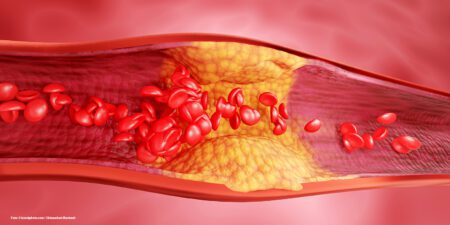COVID-19, the deadly disease that has spread world wide in „warp-speed“ may be known for its negative impact on our respiratory system but now, a year after the first outbreak we see quite a few other complications in the aftermath of the SARS CoV-2 infection.
Complications of COVID-19 include:
- Fatigue
- Arrhythmias (irregular heart rate)
- Heart attack
- Myocarditis (inflammation of heart muscle)
- Myalgias (muscle pains)
Myocarditis
The heart is a unique and strong muscle. Like all muscles, the heart muscle effectively contracts and relaxes. This pumping keeps the blood flowing to different parts of the body.
Myocarditis is inflammation of the cardiac muscles that is not due to ischemia. The most evident symptoms of myocarditis include:
- Shortness of breath
- Joint pain
- Pain in the chest
- Swelling in the legs/feet
- Fatigue
Many cases of COVID 19 have been reported to have died because of the myocardial attack of the virus and not by the pulmonary assault.
Diagnosing coronavirus-associated myocarditis is a little tricky.
Myocarditis Post-Coronavirus Infection
Different mechanisms explain the myocardial injury caused by a coronavirus infection.
Pathophysiology Of Coronavirus-related Myocarditis
Myocarditis is mostly caused by a viral infection. So, it is proposed that myocarditis in COVID-19 patients is attributed to direct infection of the heart (myocardium) by the novel coronavirus infection. A study shows that SARS-CoV-2 attacks the heart muscle and can cause cell death and inflammation.
Another scientific proposal is that myocarditis associated with COVID-19 is due to the host cells’ immune response. Some studies have claimed that myocarditis causes about 7% of deaths due to COVID-19.
How To Diagnose COVID-19 Associated Myocarditis
Athletes and sports persons have a tough time training during and after coronavirus infection. Therefore, it is necessary to screen for any cardiac involvement in the COVID-19 infection.
Special attention is given to athletes because the prevalence of myocarditis in COVID positive athletes is a whopping 15%, a study suggests.
The coronavirus’s entry into the heart relies on the presence of the ACE-2 enzyme, and autopsies have revealed the virus’s presence in the heart, therefore, probing for further research.
Examination And Evaluation
History Of Patient
The first step in diagnosing myocarditis is the analysis of the complete history of the symptoms. Though symptoms vary between individuals, however, chest pain and tightness on exertion are frequently reported. Reduced exercise tolerance and recurrent chest pain are two significant symptoms. Severe cases show signs of evident heart damage (heart failure or cardiogenic shock).
Electrocardiogram (ECG)
An electrocardiogram is very frequently used to observe changes in the heart. It is an easily performed procedure thanks to the portable ECG machines.
An electrocardiogram gives an idea of the PQRST curve of the heart to the doctors. This investigative process helps cardiologists identify cardinal signs of myocarditis that include:
- Increased thickness of cardiac walls
- Dilation of heart chambers
- Pericardial effusion
ST-elevation and PR depression are seen in some cases of myocarditis due to COVID, but this test is not very sensitive in detecting the disease.
Imaging
A successful screening method for myocarditis is medical imaging.
Nuclear Imaging
Nuclear imaging is a sensitive imaging way but lacks specificity. Thallium 201 and technetium 99m scintigraphy clarifies the presence of myocarditis, and the test is not highly recommended.
Magnetic Resonance Imaging
Cardiac magnetic resonance (CMR) imaging is an advanced and more comprehensive imaging technique. The process has complications for healthcare providers and patients. Therefore, it is not used in acute patients.
However, the test is frequently used to detect myopathic changes in COVID patients, a study suggests. The imaging results are paired with results from biomarker values.
According to an analysis, CMR is pivotal in differentiating between myocarditis and other heart issues.
Laboratory Testing (Biomarkers)
Troponin levels
Myocardial damage and incidents are effectively diagnosed by checking the levels of specific biomarkers in the blood. C-reactive protein (CRP) and Erythrocyte sedimentation rate (ESR) are raised whenever inflammation occurs in the body.
Lactic dehydrogenase is an enzyme that is released into the bloodstream in response to myocardial damage. However, the most sensitive biomarker for myocarditis is the troponin.
N-terminal pro-B type natriuretic peptide (NT-proBNP) and troponin enzymes of the heart (troponin T, I) are elevated in acute myocardial injury cases. The levels of the troponin enzymes reach their maximum level 12-48 hours after the myocardial accident.
In a case study, researchers observed raised levels of Troponin-I in a COVID-19 associated myocarditis patient. Similarly, in another 21-year-old COVID patient, myocarditis was confirmed using elevated Trop I levels with cardiac magnetic resonance imaging.
Antigen/Antibody Testing
Myocarditis is usually the result of a viral infection. Staphylococcus aureus and streptococcus viruses are notorious for causing the disease. The presence of these microbes in the body is tested using antigen (virus protein) or antibody (cells of host’s defense system) testing. In case of coronavirus infection, the results of CMR and ECG are paired with an antigen/antibody test done for COVID-19.
Wearable Devices
We have seen a myriad of wearable devices after the advent of the corona pandemic. These portable and easy to wear smart gadgets are now laced with robust medical hardware, including electrocardiograms and oxygen saturation meters.
The most common use of wearable technology in the present times has been oxygen saturation measurement.
According to a study, wearable ECG technology is pretty much accurate in diagnosing atrial fibrillations and other heart conditions. Heart rate monitors are incorporated into the smart gadgets that help diagnose arrhythmias (which may be a myocarditis symptom). Another study advocates the efficacy of wearable devices in heart failure care.
Conclusion
Myocarditis is associated with COVID-19 infection. The symptoms of myocarditis (chest pain, exercise intolerance) remain even after recovery from the virus.
Diagnosing COVID-19 associated myocarditis can be tricky. However, the best methods are evaluating patient history, cardiac magnetic resonance imaging, and troponin enzyme levels of the body. These investigative findings and imaging results are combined to rule out other myocardial ailments.
Dr. Lutz Graumann, Chief Medical Officer @ Nambaya
Nambaya is a thought leader in the fields of medical technologies and digital health. We provide secure platforms for biosignals in the areas of cardiology, occupational health and performance medicine.
Autoren
ist Sportmediziners mit den Arbeitsschwerpunkten Förderung und Steigerung der individuellen Leistungsfähigkeit. Seit Ende 2018 ist er der Präsidenten der neu gegründeten „ International Association of Performance Medicine“. Er schreibt regelmäßig Beiträge für Fachmagazine und lehrt an verschiedenen Institutionen zu den Themen Sportmedizin, manuelle Therapie und Functional Training im In- und Ausland. Zudem betreut der als Mannschaftsarzt den Deutschen Eishockey Bund.




